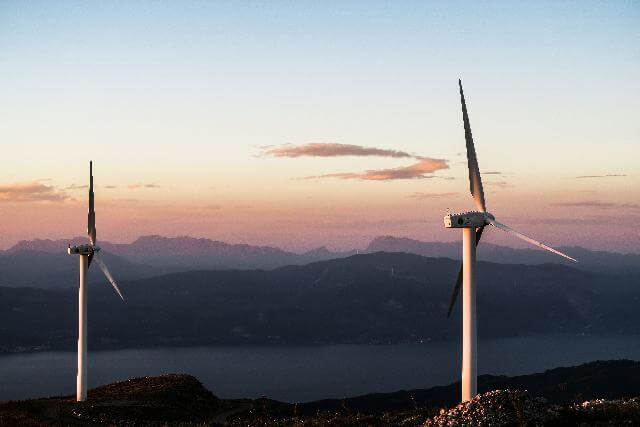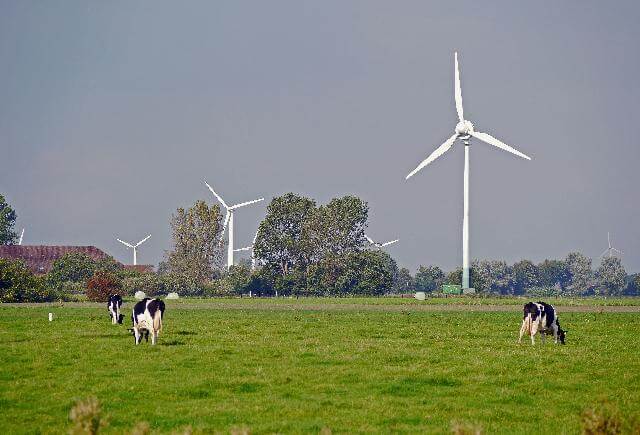Wind turbines are a fun and calm way to produce clean electricity.
In fact, wind power consumption has increased over the past few years.
According to the American Wind Energy Association’s reports, the new wind power systems reached 7 gigawatts in 2017.
Today, wind contributes up to 6% of the overall electricity generated in the U.S.
So are wind turbines illegal or legal? Most state laws demand planning permissions to install a wind turbine on your property.
Other restrictions vary depending on:
- Turbine’s height
- Distance from the property
- Specific areas for installation
Wind turbines are only illegal if you infringe the stated regulations in your region.
Here, we’ll examine in detail situations when wind turbines are legal or illegal.
Legal Considerations for Installing Wind Turbines
The increasing demand for sustainable energy leads to more wind turbines.
But are wind turbines illegal or legal? There are rules and policies of public law that govern wind turbine constructions that you must consider.
They include:
1. Comply with the Planning Law and Permissions
Planning laws for the construction of wind turbines vary between states.
Wind turbines installed on domestic properties are Permitted Development only if they meet specific criteria.
Pole-Mounted Wind Turbines
The top of pole-mounted turbines must not rise over 11.1m above the ground.
Also, the distance between the wind turbine and the edge of your property should be at least 1.1 times the turbine’s height.
Building-Mounted Wind Turbines
Here, you need to set aside the property to build the turbine.
The turbine blades’ top should not be more than 3m above your building’s top or 15m above the ground.
You should also install the turbines about 5m from the brink of your property.
In Scotland, the distance between the turbine and the boundaries of another building should be 100m or more.
All Wind Turbines
The wind turbine you want to install on your property must be the only unit for energy generation available.
In short, there should be no air source heat pump or another wind turbine on your property.
Ensure the lower end of the turbine’s blades is at least 5m off the ground.
The turbine’s location should not be in a World Heritage Site, Conservation Area, or such place. If it’s a must, there may be additional policies that will apply.
If you violate any of these criteria, your wind turbines will be illegal, and you may face the law or worse.
So be sure to read through all the planning criteria of your area to be on the safe side.
You can read more about legal and planning laws in England, Scotland, Wales, and Northern Ireland to get more information.
Also, visit your local planning officer to learn more about their specific criteria before starting your project.
2. Check the Suitability of Your Land or Property
Not all pieces of land and properties are legally entitled to wind turbine installation.
Some buildings may be subject to specific restrictive laws.
Such buildings may limit the construction of such structures.
For example, you may have bought a property from a neighbor who wishes to protect their view of a natural feature around.
3. Review its Impact on the Neighboring Community
Before installing a wind turbine, it is essential to anticipate if it will harm your neighbors.
Will the installation block your neighbor’s view of the lake, mountain, or beautiful scenery?
For instance, Jay Nygard, a green-energy entrepreneur, installed a 29-foot high turbine that blocks the neighbor’s front yard when spinning.
The neighbors continued making complaints in court and eventually landed him in jail.
Also, determine if the installation will violate any rights like the right of way of the neighboring landowners.
It is advisable to take legal advice before installing a wind turbine on your property.
Consult your neighbors, including insurance and mortgage providers, about your turbine installation plans before investing your money.
If you fail to do so, the turbine will be illegal, and you could go to jail. Your illegal wind turbine may also get demolished, resulting in massive waste.
4. Terms of Agreement
You should carefully evaluate the terms of agreement you are about to enter with the energy company.
Consider seeking advice from a reputable law firm to help you make informed decisions regarding the contract terms.
Once you install the turbines, you can expect reduced electricity bills in your home as the wind is free.
However, you may get paid by the energy company through a Feed-In-Tariff system for the surplus electricity supplied to the local grid.
In such cases, you should agree to the terms stated by the company to avoid future complications.
5. Comply with Tax Terms
The cost of installing a wind system will vary depending on the size and installation method.
For instance, pole-mounted systems cost more to install than building-mounted turbines.
However, all wind turbine systems are subject to a VAT rate of 5%.
Tax rebates and credits may also reduce the cost of a wind turbine by thousands of dollars.
But this may vary depending on the turbine’s utility, location, and government policies.
For instance, the IRS allows you to pay reduced taxes by less than 30% off your turbine’s cost.
So before you install a turbine on your property, take your time and evaluate the agreement terms of installing or maintaining the system.
Please make sure they are fair and accept them before doing anything.
Conclusion
Are wind turbines illegal? No, unless its installation violates the planning laws and criteria stated by your state’s public law.
Ensure the land or property you want to install the turbine has no restrictions.
Plus, consult your neighbors about your plans and see if they agree.
By doing so, you can identify the possible complaints that would otherwise term your wind turbine illegal in the future.
Carefully understand the contract agreements you enter into with the energy company.
And ensure you agree with the tax terms to avoid future complications.




